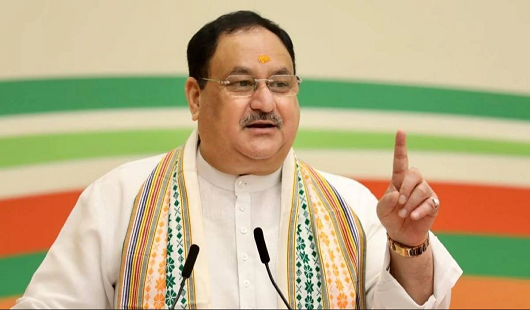The difficult task of replacing Amit Shah as president of the BJP fell to JP Nadda when he assumed office. But the incoming president will face a different challenge: fulfilling Modi and Shah’s expectations while avoiding becoming another Nadda in the eyes of the RSS. The candidate who best meets this requirement will be elected to the party’s leadership.
Although JP Nadda was granted an extension until the 2024 Lok Sabha elections, his term officially expired in 2023. A president may hold office for two consecutive three-year terms under the BJP’s constitution, however the party is now waiting for a new leader. The election of state presidents is now in progress. Party regulations stipulate that at least half of the state presidents must be elected before the national president can be elected. Presidents will be appointed in 18 states throughout this process, which is anticipated to take two more weeks. The national president’s election schedule will then be announced.
But in the end, JP Nadda’s successor will be the person who receives the support of the Rashtriya Swayamsevak Sangh (RSS) and fulfils the expectations of Prime Minister Narendra Modi and senior cabinet member Amit Shah.
What Kind of President Does the RSS Want?
Although the RSS does not formally meddle in party or government affairs or recommend candidates, its choices for the BJP’s president are significant. In actuality, however, the final choice requires RSS clearance. This dynamic has persisted under Modi-Shah and since the Vajpayee-Advani era. However, this connection underwent minor adjustments following the 2024 elections.
In an interview during the election campaign, Nadda hinted that the BJP had become powerful enough under Modi-Shah to no longer need the backing of the RSS. He didn’t specifically mention the group, but it was obvious what he meant. After the RSS withdrew in response to this declaration, the BJP found it difficult to win a majority on its own and had to rely on allies like Nitish Kumar and Chandrababu Naidu to establish the government.
Mohan Bhagwat launched a calculated intervention, beginning with a camp in Jharkhand, when the RSS deemed this result intolerable. Despite losing Jharkhand, the BJP went on to win in Delhi, Maharashtra, and Haryana. Bhagwat has now turned his attention to West Bengal, indicating that the next president of the BJP would have to strike a balance between the RSS and the party.
BJP’s Current Needs
Since it is illegal to hold both roles at the same time, the party will need to appoint a new president after Nadda joins the cabinet following the elections. Similar changes took place in 2019 when Amit Shah was appointed Home Minister, with Nadda first acting as president before taking on the full responsibilities. Despite his present cabinet function, Bhupender Yadav, who previously ran for the job, is now again seen as a possible candidate. Though the BJP’s defeat in Himachal Pradesh would work against him, Anurag Thakur’s name has also come up. Dharmendra Pradhan, an OBC politician who was instrumental in the BJP’s victory in Odisha, is another formidable candidate. OBC leader Shivraj Singh Chouhan is also in the running, but regional political dynamics may force him to wait.
As BJP aims to strengthen its foothold in West Bengal and South India, names like Nirmala Sitharaman, Daggubati Purandeswari, and Pralhad Joshi have gained traction.
Ultimately, the next BJP president will be someone who not only aligns with Modi-Shah’s strategic goals but also earns the RSS’s confidence.




